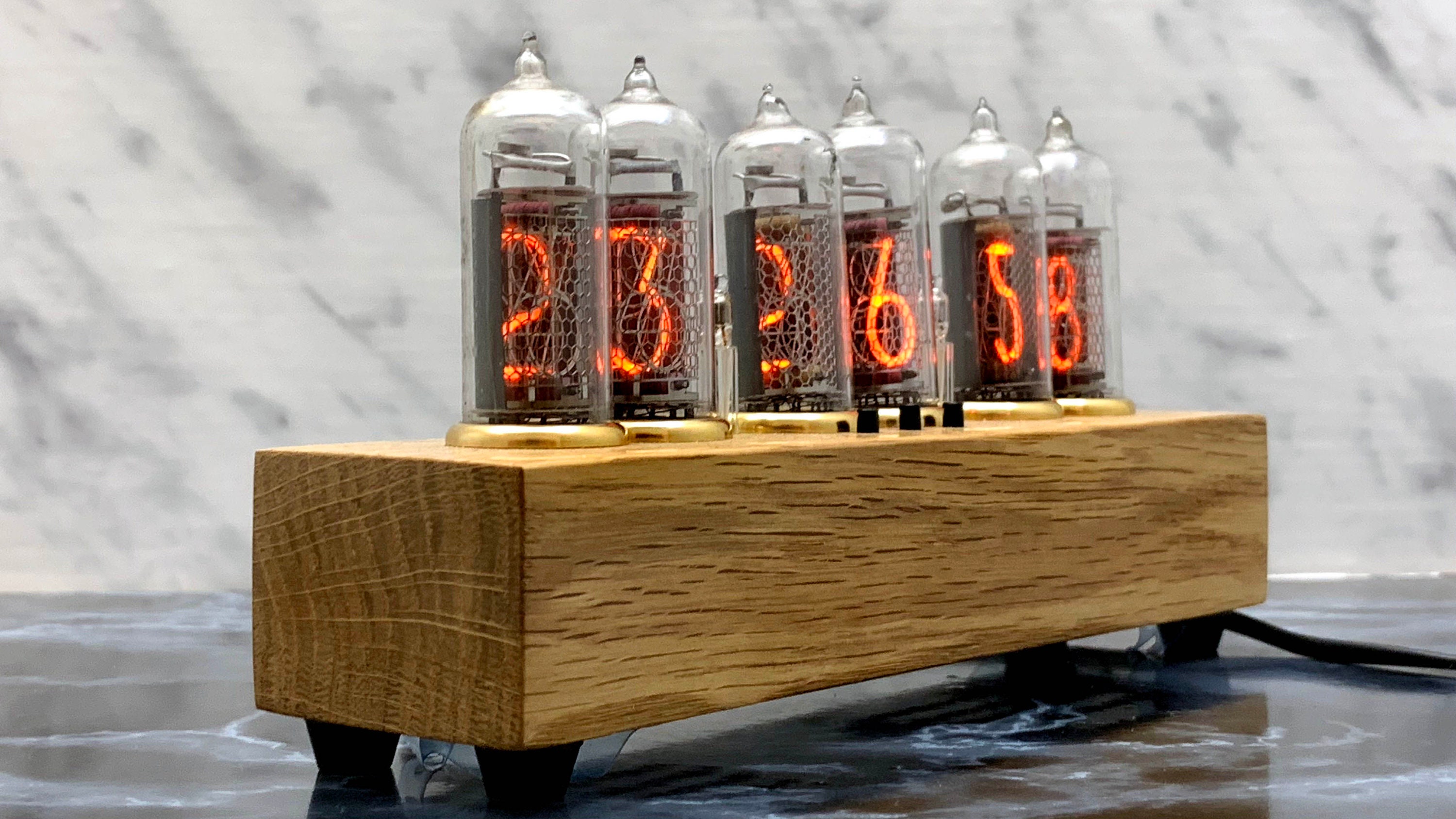

Nixie tube clock code#
One option is to add a drift-corrected real-time clock module, but Nishijima provides an even more accurate solution to this problem as one of his code examples: a Lixie clock that self-adjusts. And even so, I expect it will drift as the ambient temperature changes. So it took some trial-and-error tweaking to the code to get the clock reasonably accurate. It’s not surprising that it ran a little off-some 0.3 percent fast. Although that function is helpful, it’s only as accurate as the system clock, which is only as accurate as the time base, which for the Arduino Nano I was using is a ceramic resonator. Arduinos have a function called millis() that keeps track of the number of milliseconds since the last reset. The trickiest aspect, really, was getting it to keep decent time. With Nishijima’s library, I had a four-digit clock up and running in a jiffy. One of the other features supported by the Lixie library lets you set the color of the displays to mimic the color of a Nixie tube, so I adopted that. I set that value to 400 milliamps so I could run the displays off a computer’s USB port without worry. This library includes a handy feature that allows you to set the maximum current that the displays will draw. The programming took very little effort, too, thanks to an Arduino library that Nishijima has written for these displays. Some careful measurements and testing with a cardboard template proved effective here, and the four Lixie displays ended up being easy enough to mount on the wooden base. The only challenging part of the woodworking was fashioning the various holes and cutouts for the Lixie displays so that none of the openings would be visible from the top. I made the base out of 6-millimeter-thick (¼ inch) red oak obtained at a local home center. So all I needed to do was to construct a base for my clock and program a spare Arduino Nano I had lying around to display the time. They come fully assembled and can easily be controlled by an Arduino. I purchased four of these displays from Nishijima at $US 38 each.

I’m not sure whether he was aware that edge-lit numeric displays go back just about as far as Nixies, though: Some computers and electronic measurement equipment of the 1950s used edge-lit acrylic to display numbers in a similar fashion. The creator of the Lixie, Connor Nishijima, crafted his edge-lit displays specifically to resemble Nixie tubes.


 0 kommentar(er)
0 kommentar(er)
